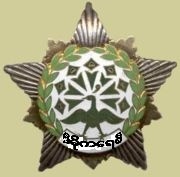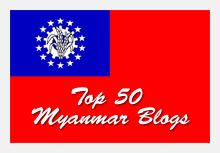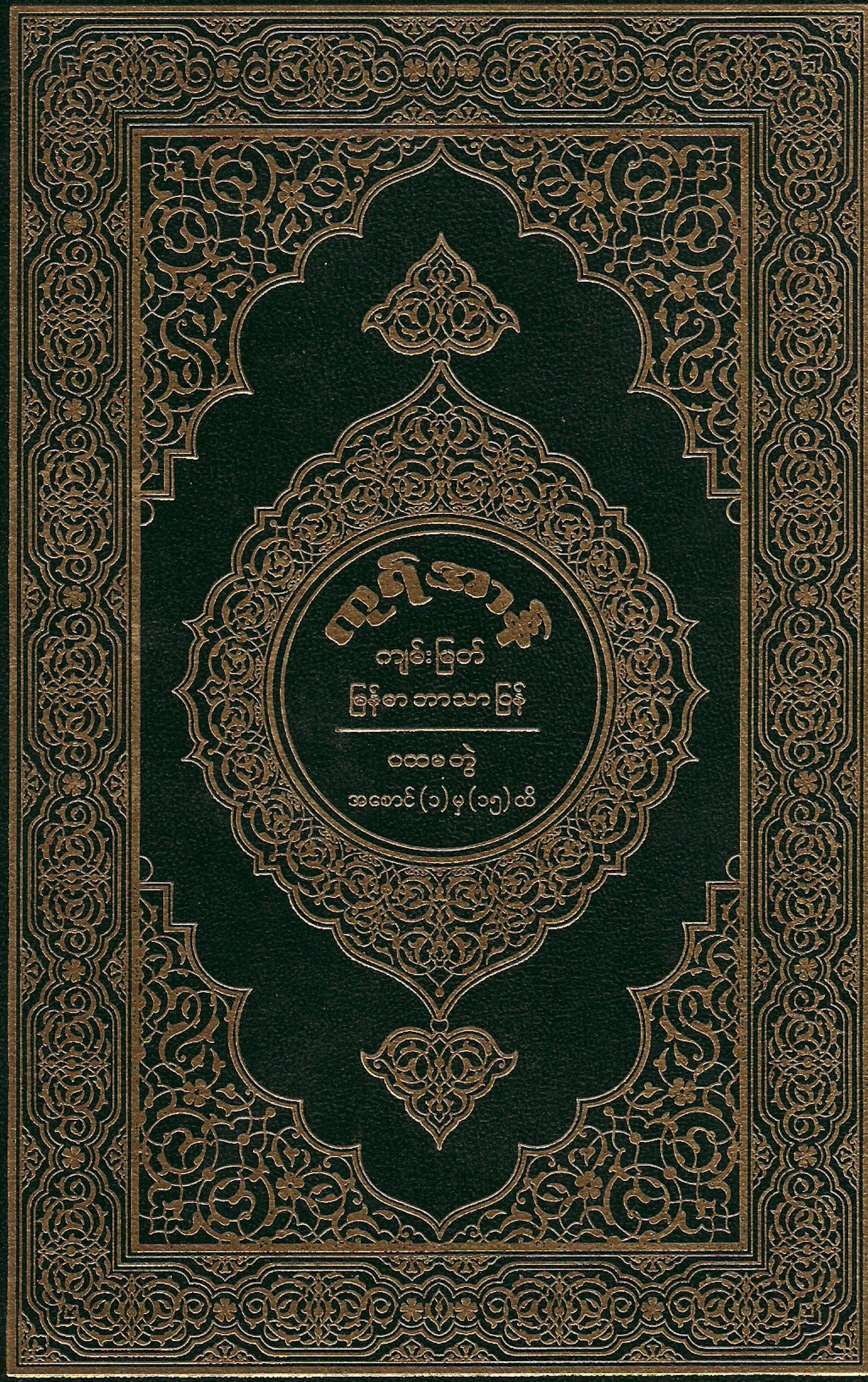Burmese Chinese
The Burmese Chinese or Chinese Burmese are a group of overseas Chinese born or raised in Burma (Myanmar).
Although the Chinese officially make up three percent of the population, this figure may be underestimated because of _
-
intermarriage between them and the ethnic Bamar,
-
and because of widespread discrimination against minorities (which compels many to declare themselves as Bamar when applying for birth certificate or national identification card).
The Burmese Chinese_
-
dominate the Burmese economy,
-
have a disproportionately high percentage of the educated class.
Generally, the Burmese Chinese in Lower Burma fall into three main groups:
-
Burmese called eingyi shay, or let shay lit. long-sleeved shirts to Hokkien and Hakkas from Fujian Province
-
Burmese called eingyi to, or let to lit. short-sleeved shirts to Cantonese and Hakka from Guangdong Province
-
So Burmese sometimes called zaka, lit. mid-length sleeve to all the Hakka from Fujian and Guangdong provinces.
-
But Hakkas are further subdivided into those with
-
ancestry from Fujian Province, called ein-gyi shay ha-ka
-
and Guangdong Province, eingyi to haka respectively.
The Hokkien and Cantonese comprise 45% of the ethnic Chinese population.
The groups have different stereotypical associations.
-
The Cantonese are commonly thought of as the poorest of the Chinese,
-
the Hokkiens are generally wealthier,
-
occupying high positions in the economy,
-
and having connections to the government.
In Upper Burma and Shan Hills,
-
the Panthay
-
and Kokang, are speakers of a Mandarin dialect of the Southwestern Mandarin branch, most akin to Yunnanese.
Combined, they form 21% of Burmese Chinese.
Kokang are_
-
mountain-dwellers
-
and farmers
-
classified as a part of the Shan national race, although they have no linguistic or genetic affinity to the Tai-Kadai-speaking Shan.
Muslim Panthay_
-
are considered as separate local nationalities
-
rather than a Chinese diaspora community.
The Tayoke kabya of mixed Chinese and indigenous Burmese parentage.
-
The kabya (Burmese: mixed heritage) have a tendency to follow the customs of the Chinese more than of the Burmese.
-
Indeed those that follow Burmese customs are absorbed into and largely indistinguishable from the mainstream Burmese society.
-
A large portion of Burmese is thought to have some kabya blood,
-
because immigrants could acquire Burmese citizenship through intermarriage with the indigenous Burmese peoples.
Culture
Politics
Now, we see the Muslims and Indians participating in the monks led peoples protesting. However, the Chinese seem to be curiously missing – in shape or form – within the context of the current protests.
Are they against the current protests or in support of the protests? Or simply indifferent to any of this since they already have a stronghold over Burma’s economy and anything that takes attention away from them would be positive?
Either way, the bigger question here is not a question of why aren’t the Chinese involved in these protest rather when will the Chinese get involved. The bottom line is why do the minorities, specifically the Chinese and the so called Indians or Muslims, continue to feel disenfranchised?
Language
-
Most Burmese Chinese typically speak Burmese as their mother tongue.
-
Those with higher education also speak Mandarin
-
Those with higher education also speak Mandarin and/or English.
-
Some modern educated use English.
-
Some use, Chinese dialects/languages.
-
Hokkien is mostly used in Yangon as well as in Lower Burma,
-
while Taishan Cantonese and
-
Yunnanese Mandarin are well preserved in Upper Burma.
Conditions of Chinese-language schools_
-
General Ne Win’s (1962-1988) banned on the Chinese-language schools caused a decline of Mandarin speakers.
-
Chinese schools are growing again nowadays because of the increase in investors and businessmen from Mainland China and Taiwan, who uses Standard Mandarin,
Religion
Most Burmese Chinese practice_
-
Theravada Buddhism,
-
incorporating some Mahayana Buddhist
-
and Taoist beliefs,
-
such as the worship of Kuan Yin.
-
Chinese New Year celebrations,
-
as well as other Chinese festivals, are subdued and held privately.
-
Clan associations are often the only places where the Chinese culture is retained.
The Panthay or Chinese Muslims practice Islam.
Education
The Burmese Chinese_
-
place a high importance on education,
-
a disproportionate big share with advanced (medical, engineering or doctorate) degrees. (SOA’s note: it is partly because Muslims are labeled Kala and denied the place for postgraduate educations. The Chinese not only escaped that kind of discrimination but they got the special privileges given by the Chinese blooded political, military and education authorities.)
-
The number would be higher still had it not been for the longstanding ban on those without Burmese citizenship from pursuing advanced degrees.
-
Nowadays, many wealthy Burmese Chinese send their children overseas for further studies especially in US, UK, Canada, Australia, Thailand, Malaysia and Singapore.
Names
The Burmese Chinese have_
-
Burmese names
-
and many also have Chinese names.
Names in various Chinese dialects are roughly transliterated into the Burmese.
-
For example, a person named ‘Khin Aung’ may have the Chinese name of 慶豐 (pinyin: Qìngfēng), with ‘慶’ (pinyin: qìng) corresponding to ‘Khin’, and ‘豐’ (pinyin: fēng) corresponding to ‘Aung’.
-
However, variations of transcription do exist (between dialects),
-
and some Burmese Chinese do not choose to adopt similar-sounding Burmese and Chinese names.
-
Because the Burmese lack surnames, many Burmese Chinese tend to pass on portions of their given names to future generations, for the purpose of denoting lineage.
According to publications of Longsei Tang, a clan association based in Yangon, the ten most common Chinese surnames in Yangon are:
-
Li (李)
-
Peng (彭)
-
Shi (時)
-
Dong (董)
-
Min (閔)
-
Niu (牛)
-
Bian (邊)
-
Xin (辛)
-
Guan (關)
-
Tsui/Hsu(徐)
Cuisine
The Burmese Chinese cuisine is based on Chinese cuisine, particularly from
-
Fujian,
-
Guangdong
-
and Yunnan provinces, with local influences.
-
Spices such as turmeric and chili are commonly used.
-
Pauk si
-
Bhè kin
-
Igyakway
-
Htamin kyaw
-
La mont
-
Mewswan
-
San-byoat
-
Panthay khaukswè
-
Sigyet khaukswè
History
-
The earliest records of Chinese migration were in the Song and Ming dynasties.
-
In the 1700s, Ming Dynasty princes settled in Kokang (the northern part of Burma).
-
Chinese traders, however, traveled up to the capital city, northern towns on the Irrawaddy such as Bhamo.
-
There was a Chinese community at Amarapura.
-
Another wave of immigration occurred in the 1800s under the British rule.
-
They came to Burma via Malaysia.
-
When the Chinese Communists expelled the Kuomintang, many fled to Burma and Thailand over the borders of Yunnan Province.
-
The Burmese government fought and removed the armed KMT and forced them to Taiwan; those who managed to stay prospered.
-
The Chinese dominate the highly lucrative rice and gem industries.
-
Many became merchants and traders owning both wholesale and retail businesses.
-
The northern region of Burma has seen an influx of mainland Chinese immigrant workers, black market traders and gamblers.
-
In the Kachin State, which borders China in three directions, Mandarin Chinese is the lingua franca.
They integrated well into Burmese society because they, like the Bamar,
-
were of Sino-Tibetan stock
-
and were Buddhists,
Their success_
-
is reflected in the Burmese saying, “Earn like the Chinese, save like the Indian, and don’t waste money like the Bamar”.
-
They got the nickname pauk hpaw (lit. sibling).
-
During the 1950s, Burma was one of the first countries to recognize the People’s Republic of China as a nation.
However, its own Chinese population was treated as aliens.
-
The Burmese Chinese were issued foreign registration cards (FRC), which declared that they were citizens of China.
-
A similar discrimination policy was set up for Indians.
In 1962, Ne Win led a coup d’état and declared himself head of state. Although a kabya himself, he banned Chinese-language education, and created other measures to compel the Chinese to leave.
-
Ne Win’s government stoked up racial animosity and ethnic conflicts against the Chinese, who were terrorized by Burmese citizens, the most violent riots taking place at the time of the Cultural Revolution in China.
-
When Ne Win implemented the “Burmese Way to Socialism”, a plan to nationalize all industries, the livelihoods of many entrepreneurial Chinese were destroyed and some 100,000 Chinese left the country.
-
All schools were nationalized, including Chinese-language schools.
Beginning in 1967 and continuing throughout the 1970s, anti-Chinese riots continued to flare up and many believed they were covertly supported by the government.
-
Many Burmese Chinese left the country during Ne Win’s rule, largely because of a failing economy and widespread discrimination.
-
The first government-sponsored racial riots to take place in Burma was in 1967, during General Ne Win’s rule. In the riots, the general populace went on a killing spree because of sedition and instigation against the Chinese by various government departments.
-
The massacre lasted for about five consecutive days, during which thousands of Chinese died or were left dying in the streets of Rangoon. Some of the Chinese were thrown alive from the second and third floors of buildings in downtown Rangoon. The dead and wounded Chinese were hauled up unceremoniously and dumped onto army trucks and taken to ‘htauk kyan’ incinerators and the ‘carcasses’ were sent up in smoke.
-
That showed the true bestial and cruel side of the character of the ruling Burma Military Junta. The only “crime” the Chinese committed was the wearing of Chairman Mao’s badges on their shirts.
-
Latha Secondary School was torched by the henchmen of General Ne Win’s government, where school girls were burnt alive.
-
Chinese shops were looted and set on fire.
-
Public attention was successfully diverted by Ne Win from the uncontrollable inflation, scarcity of consumer items and rising prices of rice.
Today, the majority of Burmese Chinese live in the major cities of_
-
Yangon,
-
Mandalay,
-
Taunggyi,
-
Bago, and their surrounding areas.
-
According to Global Witness, 30 to 40% of Mandalay’s population consists of ethnic Chinese.
-
Although there are Chinatowns (tayoke tan) in the major cities, the Chinese are widely dispersed.
Notable Burmese Chinese
-
Aung Gyi – leading army dissident and Ne Win’s former deputy/co-conspirator in the 1962 coup
-
Aw Boon Haw (Hakka) – Inventor of Tiger Balm
-
Aw Boon Par (Hakka) – Brother of Aw Boon Haw
-
Eike Htun (Kokang) – Managing director of Olympic Construction Co. and deputy chairman of Asia Wealth Bank, two large conglomerates in Burma
-
Khun Sa (Kokang) – Major Southeast Asian druglord
-
Khin Nyunt – Former Prime Minister (2003-2004) and Chief of Intelligence (1983-2004) of Myanmar
-
Lo Hsing Han (Kokang) – Major Southeast Asian druglord
-
Steven Law (also known as Tun Myint Naing; Kokang) – Managing director of Asia World Company, a major Burmese conglomerate and son of Lo Hsing Han
-
Ne Win (Hakka) – Leader of Burma from 1960s to 1980s
-
San Yu (Hakka) – President of Burma in the 1980s
-
Serge Pun – Proprietor of Yoma Bank, a major banking chain in Myanmar and chairman of First Myanmar Investment Co. Ltd (FMI), one of Myanmar’s leading investment companies
-
Taw Sein Ko (Hokkien) – eminent Director of Archaeology (1901-1915)
-
Thakin Ba Thein Tin – Communist leader from the 1970s to the 1990s
-
Maung Aye – Vice chairman of SPDC and Chief of Staff of Armed Forces
-
Major General Kat Sein – former Minister of Health
-
Dr. Kyaw Myint – Present Minister of Health
-
Myo Thant – Former Minister of Information under SLORC
-
Colonel Tan Yu Sai – Minister of Trade under Ne Win’s government
-
Colonel Kyi Maung– NLD member (1989-2004) and Army Commander of Rangoon in 1960s
-
U Thaung – Minister of Labour & Technical Science, Retired Legion and Ambassador
-
Lun Thi – Minister of Energy
-
Thein Sein – First Secretary of SPDC
-
Kyaw Ba – General Formal Minister of Hotel and Tourism
Reference
Wikipedia
Filed under: Analysis, Blogging, British, British Colony, Buddhism, Burma, Burmese, Burmese Chinese, Burmese Chinese Muslims, Burmese History, Burmese Indian Muslims, Burmese Kings, Burmese Muslims, Burmese Way to Democracy, CHINA, Colony, Crimes against Humanity, English Article, Ethnic Cleansing, Ethnic Minorities, SPDC, SPDC crony businessmen, SPDC Generals, Tatmadaw, Tibeto-Burman, UK., Wikipedia | Tagged: Blogging, Burma, Burmese Chinese, CHINA, Colony, India, South East Asia, Wikipedia | Leave a comment »















+(Small).jpg)

